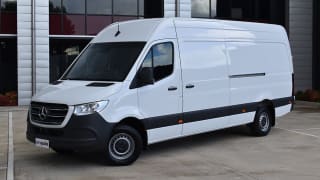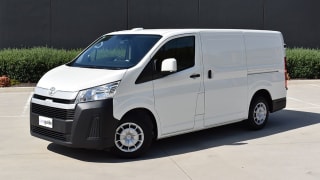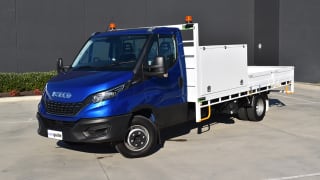Our test vehicle is officially known as the 420L BEV Mid Roof, with 420 denoting its 4.2-tonne GVM (it’s actually 4.25-tonne), L denoting its long wheelbase and Mid Roof being one of two roof heights available, with the other being the optional High Roof variant.
Like its taller stablemate, our test vehicle comes with a 68kWh lithium-ion battery pack, electric motor and single-speed automatic transmission for a list price of $104,990 plus on-road costs.
For that money you could almost buy two diesel Transit 350L Auto equivalents. Even so, the E-Transit brings zero emissions, reduced noise and claimed lower operating and maintenance costs for business operators. With 198kW and 430Nm, it also has the most power and torque of any model in the Transit line-up.

It comes equipped with 16-inch steel wheels and 235/65R16C tyres plus a full-size spare, along with dark grey bumpers and side-mouldings in areas where scrapes and dents usually occur in hard-working vans. Factory options include dual side-sliding doors and more.
A steel bulkhead/cargo barrier separates the cargo bay from the cabin, which comes standard with a single driver’s seat and twin-passenger bench seat that are all heated.
The 10-way adjustable driver’s seat includes a fold-down inboard armrest, adjustable lumbar support and base-cushion rake.

Plus there’s a two-way adjustable steering wheel, power-folding and heated door mirrors, daytime running lights, three 12-volt accessory outlets, two USB ports, a reversing camera and rear parking sensors.
Its large 12-inch touchscreen is the gateway to numerous 'Sync 4'-connected services including the 'Ford Pass' app, which includes 'Power My Trip'.
By entering a destination, this app can consider the vehicle’s current state of charge in addition to real-time traffic conditions, to help identify charging stops when a customer will need them.




















